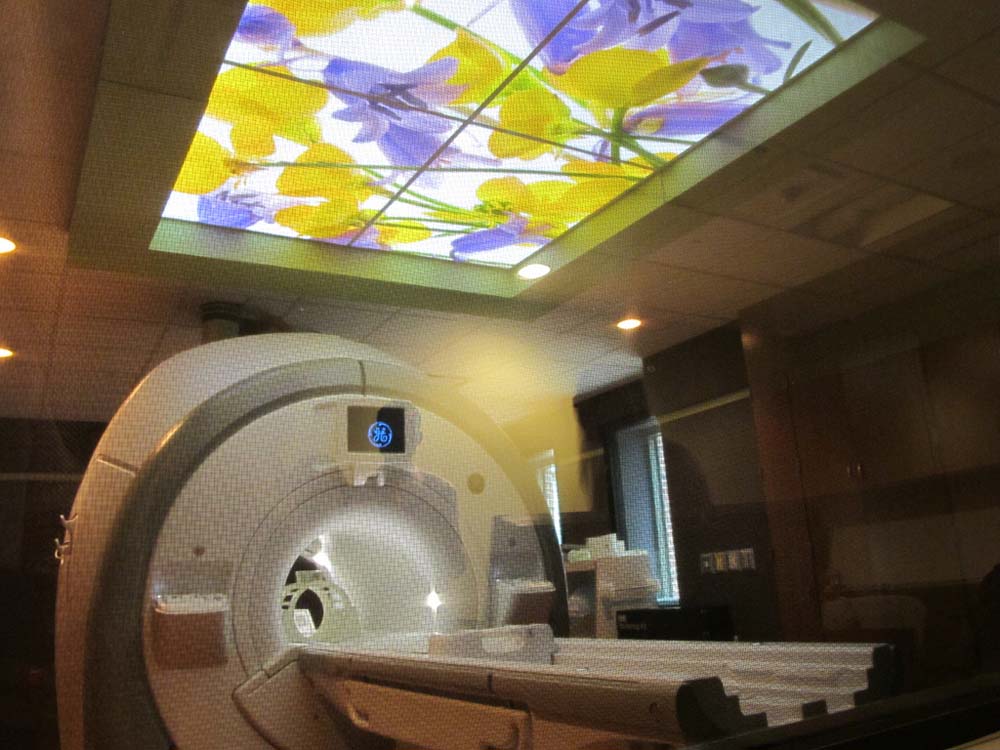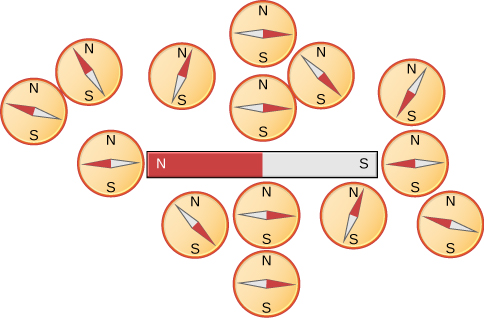| << Chapter < Page | Chapter >> Page > |
Conversely, a permanent magnet can be demagnetized by hard blows or by heating it in the absence of another magnet. Increased thermal motion at higher temperature can disrupt and randomize the orientation and the size of the domains. There is a well-defined temperature for ferromagnetic materials, which is called the Curie temperature , above which they cannot be magnetized. The Curie temperature for iron is 1043 K , which is well above room temperature. There are several elements and alloys that have Curie temperatures much lower than room temperature and are ferromagnetic only below those temperatures.
Early in the 19th century, it was discovered that electrical currents cause magnetic effects. The first significant observation was by the Danish scientist Hans Christian Oersted (1777–1851), who found that a compass needle was deflected by a current-carrying wire. This was the first significant evidence that the movement of charges had any connection with magnets. Electromagnetism is the use of electric current to make magnets. These temporarily induced magnets are called electromagnets . Electromagnets are employed for everything from a wrecking yard crane that lifts scrapped cars to controlling the beam of a 90-km-circumference particle accelerator to the magnets in medical imaging machines (See [link] ).

[link] shows that the response of iron filings to a current-carrying coil and to a permanent bar magnet. The patterns are similar. In fact, electromagnets and ferromagnets have the same basic characteristics—for example, they have north and south poles that cannot be separated and for which like poles repel and unlike poles attract.


In [link] , a series of tiny compass needles are placed in an external magnetic field. These dipoles respond exactly like the iron filings in [link] . For needles close to one pole of the magnet, the needle is aligned so that the opposite pole of the needle points at the bar magnet. For example, close to the north pole of the bar magnet, the south pole of the compass needle is aligned to be closest to the bar magnet.
As an experimenter moves each compass around, the needle will rotate in such a way as to orient itself with the field of the bar magnet at that location. In this way, the magnetic field lines may be mapped out precisely.
The strength of the magnetic field depends on the medium in which the magnetic field exists. Some substances (like iron) respond to external magnetic fields in a way that amplifies the external magnetic field. The magnetic permeability of a substance is a measure of the substance’s ability to support or amplify an already existing external magnetic field. Ferromagnets, in which magnetic domains in the substance align with and amplify an external magnetic field, are examples of objects with high permeability.

Notification Switch
Would you like to follow the 'College physics for ap® courses' conversation and receive update notifications?